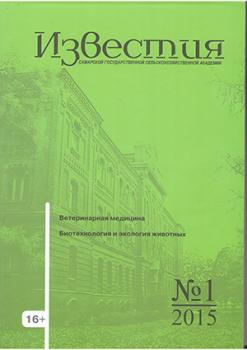p.g.t. Ust'-Kinel'skiy, Samara, Russian Federation
Russian Federation
CSCSTI 68.35
The purpose of the research is to develop methods of soil reclamation using phosphogypsum for spring barley crops on chernozem soils growing in the conditions of the central agro-climatic zone of the Samara region. The studies were conducted in 2019-2021. The soil is ordinary medium loamy chernozem with an A1 horizon up to 50-60 cm . Full-fledged shoots of spring barley of the Berkut variety in the conditions of the central agro-climatic zone of the Samara region germinate on the 7th day after sowing, this process is not affected by both mineral fertilizers and phosphogypsum. Their influence begins to manifest itself later. The introduction of phosphogypsum into the soil at the rate of 1.5-4.5 t / ha increases the vegetation of spring barley for 3-4 days, the use of phosphogypsum at the rate of 6.0 t / ha – for 5 days. The introduction of phosphogypsum into the soil against the background of the use of ammophos at a rate of 100 kg / ha in gross weight, or 12 kg /ha – N and 52 kg/ha – P2O5 of the main material, contributes to an increase in grain yield, on average, by 5.9-9.5% – up to 710-734 g/ l, fat and ash content in absolutely dry matter, respectively, by 3.4-14.2 and 4.5-20.3%, and free nitrogen extract – from 69.2% to 72.7%. The maximum values of these indicators were noted in the variants with the introduction of phosphogypsum 4.5 and 6.0 tons per 1 ha. Economically, it is most expedient to make phosphogypsum at the rate of 4.5 t/ha for spring barley of the Berkut variety on ordinary chernozem soil of the central agro-climatic zone of the Samara region. The use of the above-mentioned phosphogypsum norm (6.0 t/ha) does not provide a significant increase in yield, leads to an increase in the cost of production, a decrease in the profitability of work and inefficient use of meliorant.
phosphogypsum, alkalinity, melioration, economic evaluation
1. Kolesnikov, S. I. & Aznauryan, D. K. et al. (2011). Possibility of using urea and phosphogypsum as amelio-rants of oil-contaminated soils in a dummy experiment. Agrohimiya (Agrochemistry), 9, 77-81 (in Russ.).
2. Okorkov, V. V. (2012).The use of phosphogypsum in agriculture. Vladimirskii zemledelec (Vladimir agricolist), 4 (62), 12-19(in Russ.).
3. Akanova, N. I. (2013). Neutralized phosphogypsum - a promising agrochemical agent for agricultural intensification. Plodorodie (Plodorodie), 1, 2-7 (in Russ.).
4. Akanova, N. I., Trots, N. M. & Trots, V. B. (2021). Agro-ecological efficiency of use of potassium-sodium clay fertilizer for crops in the conditions of the Middle Volga. Samara AgroVector (Samara AgroVector), 1, 32-39 (in Russ.). doi:https://doi.org/10.55170/77962_2021_1_1_32
5. Dospekhov, B. A. (1985).Methodology of field experience. Moscow : Agropromizdat (in Russ.).
6. Trots, N. M. & Gorshkova, O. V. (2018). Assessment of the state of farmland in the Samara region located in the oil production zone. AgrarnayaRossiya (AgrarnayaRossiya), 4, 10-13 (in Russ.). doi:https://doi.org/10.30906/1999-5636-2018-4-10-13
7. Mineev, V. G.Agrochemistry and bionomic activity of potassium. Moscow : Publishing House of Moscow State University (in Russ.).
8. Liu, X., He, P., Jin, J., Zhou, W., Sulewski, G. & Phillips, S. (2011). Yield gaps, indigenous nutrient supply, and nutrient use efficiency of wheat in China. Agronomy Journal, 103, 5, 1452-1463.
9. Gabibov, M. A. (2017). Agro-ecological management of increasing the productivity of crop rotation. Vestnik Voronezhskogo gosudarstvennogo agrarnogo universiteta (Vestnik of Voronezh State Agrarian University), 2, 40-44 (in Russ.).
10. Wildflush, I. R. (2019).Agrochemistry of fertilizers and their use in current agriculture. Gorki : Belarusian State Agricultural Academy (in Russ.).
11. Kireycheva, L. V., Nefedov, A. V. & Vinogradov, D. V. (2016). Substantiation of use of a fertilizer-meliogenic mixture based on drag turf and sapropel to increase the fertility of degraded soils. Vestnik Riazanskogo gosudarstvennogo agrotekhnologicheskogo universiteta im. P. A. Kostycheva (Herald of Ryazan State Agrotechnological University Named after P.A. Kostycheva), 3 (31), 12-17 (in Russ.).
12. Trots, V. B., Akhmatov, D. A. & Trots N. M. (2015). Influence of mineral fertilizers on the accumulation of heavy metals in soil and phytomass of grain crops. Zernovoie hoziaistvo Rossii (Grain Economy of Russia), 1, 45-49 (in Russ.).





